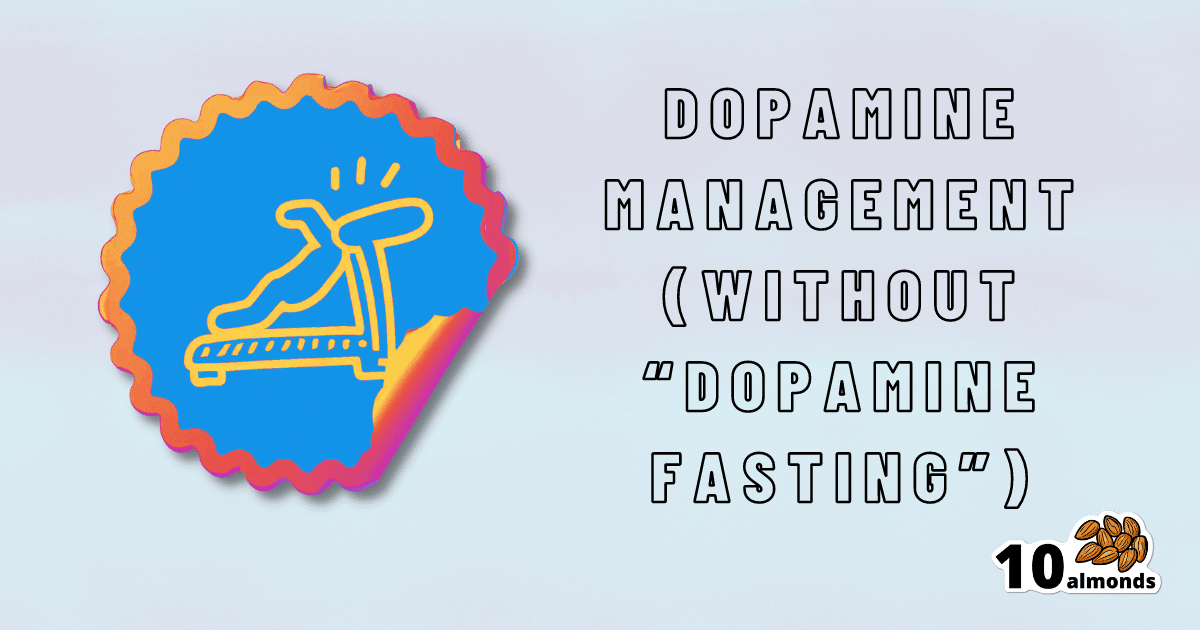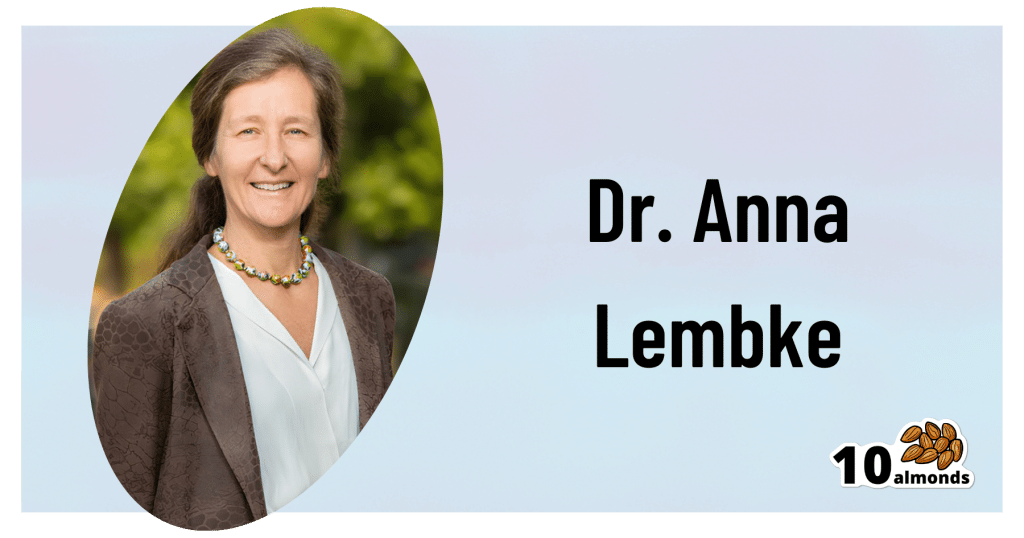Rebalancing Dopamine (Without “Dopamine Fasting”)
This is Dr. Anna Lembke, a professor of psychiatry at Stanford. Today we’ll explore her work on managing dopamine levels and getting off the hedonic treadmill.

Rebalancing Dopamine (Without “Dopamine Fasting”)

This is Dr. Anna Lembke. She’s a professor of psychiatry at Stanford, and chief of the Stanford Addiction Medicine Dual Diagnosis Clinic—as well as running her own clinical practice, and serving on the board of an array of state and national addiction-focused organizations.
Today we’re going to look at her work on dopamine management…
Getting off the hedonic treadmill
For any unfamiliar with the term, the “hedonic treadmill” is what happens when we seek pleasure, enjoy the pleasure, the pleasure becomes normalized, and now we need to seek a stronger pleasure to get above our new baseline.
In other words, much like running on a reciprocal treadmill that just gets faster the faster we run.
What Dr. Lembke wants us to know here: pleasure invariably leads to pain
This is not because of some sort of extrinsic moral mandate, nor even in the Buddhist sense. Rather, it is biology.
Pleasure and pain are processed by the same part of the brain, and if we up one, the other will be upped accordingly, to try to keep a balance.
Consequently, if we recklessly seek “highs”, we’re going to hit “lows” soon enough. Whether that’s by drugs, sex, or just dopaminergic habits like social media overuse.
Dr. Lembke’s own poison of choice was trashy romance novels, by the way. But she soon found she needed more, and more, and the same level wasn’t “doing it” for her anymore.
So, should we just give up our pleasures, and do a “dopamine fast”?
Not so fast!
It depends on what they are. Dopamine fasting, per se, does not work. We wrote about this previously:
Short On Dopamine? Science Has The Answer
However, when it comes to our dopaminergic habits, a short period (say, a couple of weeks) of absence of that particular thing can help us re-find our balance, and also, find insight.
Lest that latter sound wishy-washy: this is about realizing how bad an overuse of some dopaminergic activity had become, the better to appreciate it responsibly, going forwards.
So in other words, if your poison is, as in Dr. Lembke’s case, trashy romance novels, you would abstain from them for a couple of weeks, while continuing to enjoy the other pleasures in life uninterrupted.
Substances that create a dependency are a special case
There’s often a popular differentiation between physical addictions (e.g. alcohol) and behavioral addictions (e.g. video games). And that’s fair; physiologically speaking, those may both involve dopamine responses, but are otherwise quite different.
However, there are some substances that are physical addictions that do not create a physical dependence (e.g. sugar), and there are substances that create a physical dependence without being addictive (e.g. many antidepressants)
See also: Addiction and physical dependence are not the same thing
In the case of anything that has created a physical dependence, Dr. Lembke does not recommend trying to go “cold turkey” on that without medical advice and supervision.
Going on the counterattack
Remember what we said about pleasure and pain being processed in the same part of the brain, and each rising to meet the other?
While this mean that seeking pleasure will bring us pain, the inverse is also true.
Don’t worry, she’s not advising us to take up masochism (unless that’s your thing!). But there are very safe healthy ways that we can tip the scales towards pain, ultimately leading to greater happiness.
Cold showers are an example she cites as particularly meritorious.
As a quick aside, we wrote about the other health benefits of these, too:
A Cold Shower A Day Keeps The Doctor Away?
Further reading
Want to know more? You might like her book:
Dopamine Nation: Finding Balance in the Age of Indulgence
Enjoy!
Share This Post
Learn To Grow
Sign up for weekly gardening tips, product reviews and discounts.




